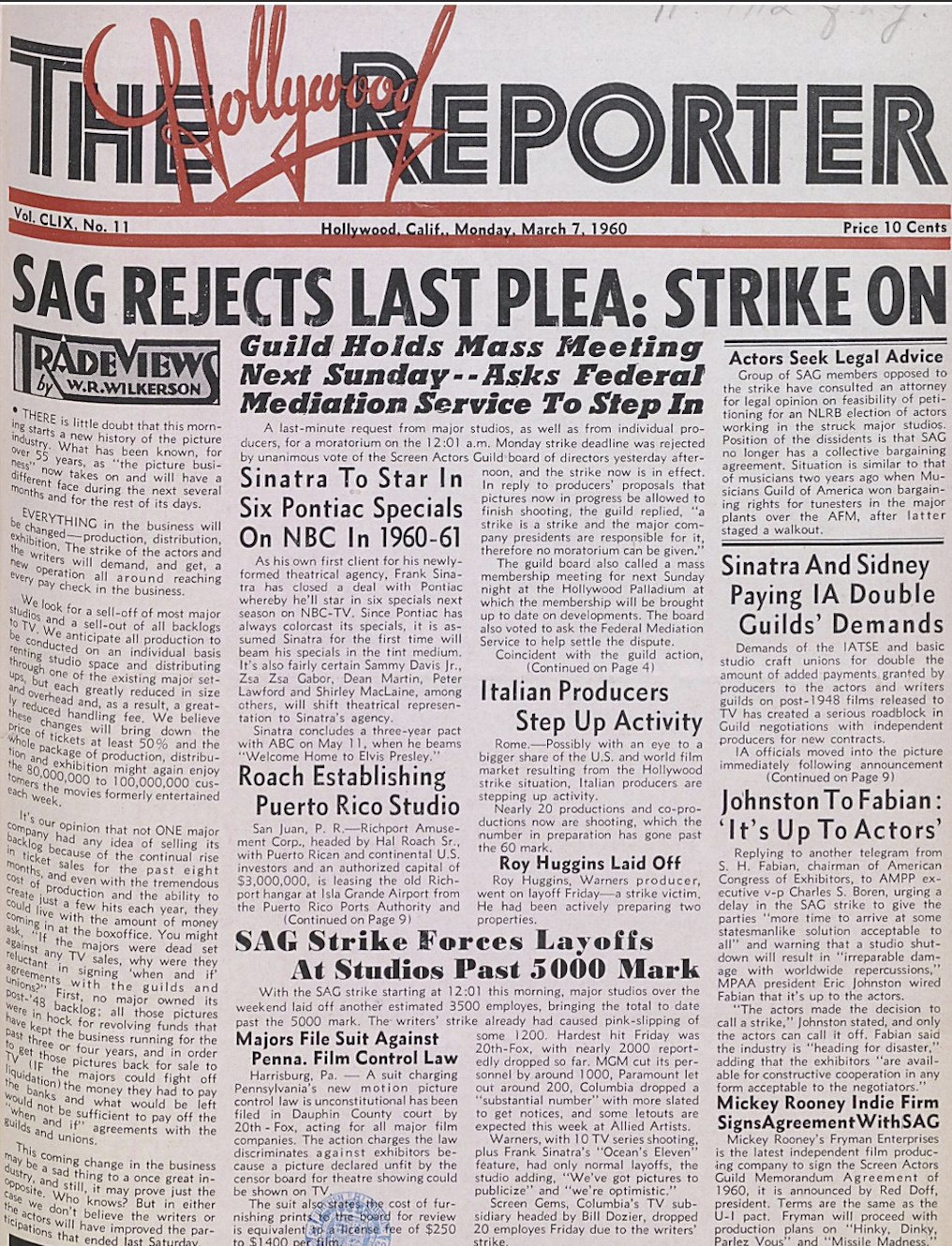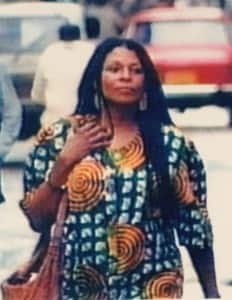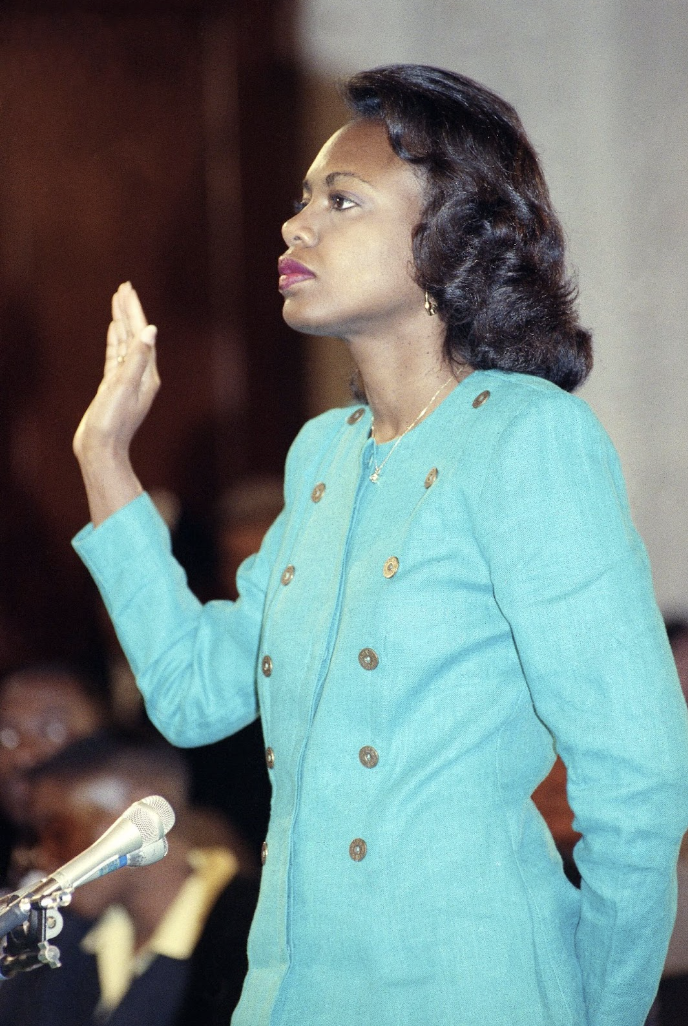By Emma Quirk, Summer 2023 Power in Place Collaborator
Image from: The Hollywood Reporter
Disclaimer: This blog looks at the gender pay gap with a strict male/female lens in order to accurately describe the data and research done on this topic.
Two major unions in the entertainment industry are on strike. Since May 2, the Writers Guild of America has been on strike, and on July 17 The Screen Actors Guild – American Federation of Television and Radio Artists joined them. This is the first time the WGA and SAG-AFTRA have been on strike at the same time since 1960. The WGA details how streaming has negatively impacted compensation for writers in a report called “Writers Are Not Keeping Up.”
Both unions are led by women; Meredith Stiehm is President of the WGA and Fran Drescher is head of SAG-AFTRA. Drescher has stated that joining in on the strike was necessary, not only for the entertainment industry but for all industries. “I am shocked by the way the people that we have been in business with are treating us. I cannot believe it, quite frankly, how far apart we are on so many things. How they plead poverty, that they’re losing money left and right when giving hundreds of millions of dollars to their CEOs. It is disgusting. Shame on them. They stand on the wrong side of history,” Drescher said in a speech. “We are labor and we stand tall and we demand respect and to be honored for our contribution. You share the wealth because you cannot exist without us.”
While Drescher and Stiehm are fighting for labor rights for all in Hollywood, a gender-based discrepancy exists. It has been found that in top-grossing movies, women have fewer lines, less of a presence, and often are put into supporting roles. Only 36 percent of all major characters are women and only 35 percent of actresses are given speaking roles. In feature films, only 31 percent are women-led stories. In terms of the gender wage gap, there is an “unexplained” wage difference of about 25 percent between male and female actors. Even for big stars, there is at least a $1 million difference per film. Women who work in other roles in Hollywood, especially as writers and directors, are paid less than their male counterparts and they are often not afforded the same number of opportunities.
Gender pay inequities are not only present in the entertainment industry but in every industry. According to the State of Working America Wages Report, highlighting data from 2019-2022, while low-wage workers made higher hourly rates overall, the gender pay gap has actually widened. In 2019, women were paid 20.3 percent less than men on average, but by 2022 the gap widened to 22.2 percent. No matter how the wage gap is measured, it persists. This disparity is a result of societal norms, discrimination, occupational segregation, and devaluation of women’s labor.
Education does not negate the gap; women with a high school diploma are paid 78.6 percent of what men with a high school diploma are, and it only increases with the level of education. Between workers with college degrees, women are paid 70.2 percent and with advanced degrees, women are paid 69.8 percent of what men are.
Race and ethnicity also play a dominant factor. These averages erase the discrepancies that Black and Hispanic women face. While white women are paid 82.5 percent and Asian American and Pacific Islander women are paid 93.4 percent of what non-Hispanic white men are paid on average, Black women are only paid 69.5 percent, and Hispanic women are only paid 64.1 percent. These disparities are enormous.
Beyond participating in the gender wage gap, Hollywood has had a unique impact on perpetuating it. Through the media it produces, which more often than not abides by strict gender stereotypes, the general public sees men in positions of power and respect, while women are shown to be mere side characters, subordinate, and in need of saving. This is also true in the way white men and women are the protagonists and even the majority of side characters, while BIPOC characters are far less likely to be found. While there has been more discussion surrounding representation in media in recent years, not enough has been done to improve the systemic disparities between men and women, white men and BIPOC, and white women and Black and Hispanic women.
References
[1] Frank, Jason. “The 2023 Hollywood Strike for Dummies.” Vulture. July 19, 2023. https://www.vulture.com/article/wga-strike-2023.html.
[2] Gould, Elise and Katherine deCourcy. “Gender wage gap widens even as low-wage workers see strong gains.” Economic Policy Institute. March 29, 2023. https://www.epi.org/blog/gender-wage-gap-widens-even-as-low-wage-workers-see-strong-gains-women-are-paid-roughly-22-less-than-men-on-average/.
[3] Park, Joann. “Uncovering Hollywood’s Contribution to the Gender Pay Gap.” Berkeley Political Review. October 12, 2022. https://bpr.berkeley.edu/2022/10/12/uncovering-hollywoods-contribution-to-the-gender-pay-gap/.
[4] “SAG-AFTRA head Fran Drescher: What she said about actors strike.” Al Jazeera. July 14, 2023. https://www.aljazeera.com/news/2023/7/14/sag-aftra-head-fran-drescher-what-she-said-about-actors-strike.
Emma Quirk is a rising sophomore at Mount Holyoke College and is double majoring in English and Critical Social Thought. On campus, Emma is a staff writer and photos editor for Mount Holyoke News and works as a student fellow in the Office of Diversity, Equity and Inclusion.



















